Question: What Kind of Golf Balls Should I Use?
If you use any old ball that you find in the bushes, this one’s for you.
Now obviously in golf, the ball is a vital part of the equation. It’s the thing we
spend most of our round staring at and subsequently hitting towards the hole,
so naturally we should take as much care picking out the best balls for us as we
would for any other piece of golfing equipment. But with all the options out
there it’s quite easy to be a bit unsure of what all the options actually mean to
you and which one to pick. So, in case you’re wondering, here’s a little guide to
help you out:
Compression Rate:
One of the first questions you should ask yourself when picking out balls is how
fast do you swing the club? This will determine whether you’ll suit higher or
lower compression balls. This is because when you hit the ball it will compress
and spring back to its original shape and depending on the compression rate
this may happen faster or slower. Each ball’s compression rate is denoted by a
number, which will tell you how fast you’ll need to swing the club at the ball to
get optimum performance from it. An example of this is the Titleist Pro V1
offerings. The standard Pro V1 has a compression rate of around 90 as
opposed to the Pro V1x, which has a compression rate of 100. The higher the
number, the harder the ball, this means that the Pro V1x will feel noticeably
harder and requires a faster seeing speed for it to not feel uncomfortably hard.
You’ll also often find a reduction in consistency when using balls with the
wrong compression rate.
Spin Rate:
The amount that the ball spins has a large effect on ball flight, changing how it
stays in the air and what happens when it hits the ground. Depending on the
construction of the ball, you’ll get differing spin rates which you can match up
to your game in order to see your preferred ball flight. So, if you need to add
distance to your irons by killing a bit of spin because you hit it too high, then a
lower spin ball could find you improvements. Spin rates aren’t necessarily tied
to compression rates, so if you are a “slower swing speed player” and still
require a spin reducing golf ball then fear not, the market has you covered. If
you compare the Srixon AD333 and the Titleist AVX, both balls with a
compression rate of roughly 80, so you don’t need Bryson DeChambeau speed
to use them. The AD333 will add more spin than the AVX would, meaning no
matter how fast you swing the club you have options to improve your flight.
Price:
Living in the real world obviously £45 for a dozen Pro V1’s can seem expensive
to someone who doesn’t play very much so looking for other options can
sometimes be a better option. I do always say you’re less likely to lose a ball
that suits you, so if you do suit a premium ball then paying for them can often
mean you see less ball turnover! However, if you are looking towards a
premium ball that is on the cheaper end of the spectrum the Callaway Chrome
Soft retails around the £38 mark. Or if you want to save more, then the £30
Srixon Q Star tour presents a higher quality 3-piece option that will stop on
greens better than the cheaper £20 options but sits at a significantly lower
price point than the flagship balls.
Feel:
In a sport where numbers are becoming more and more a part of the fabric of
the game, it’s easy to gloss over the importance of comfort and feel. So,
spending a bit of time using a golf ball in order to get comfortable with it will
always give you increased consistency and confidence. The most important
thing, once you find a ball that you like, is to stick with it. You wouldn’t use a
new set of clubs every round even if you could because it takes time to get
used to the feel, so take the same approach with your balls. Take some time to
figure out which ones suit you, stick with them and watch your scores drop!
Jim Mitchell
Custom Fit Specialist
Peter Field Golf Shop



